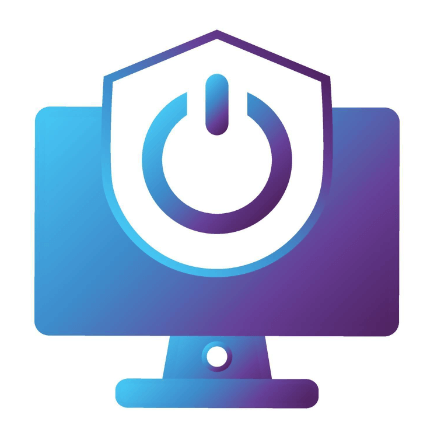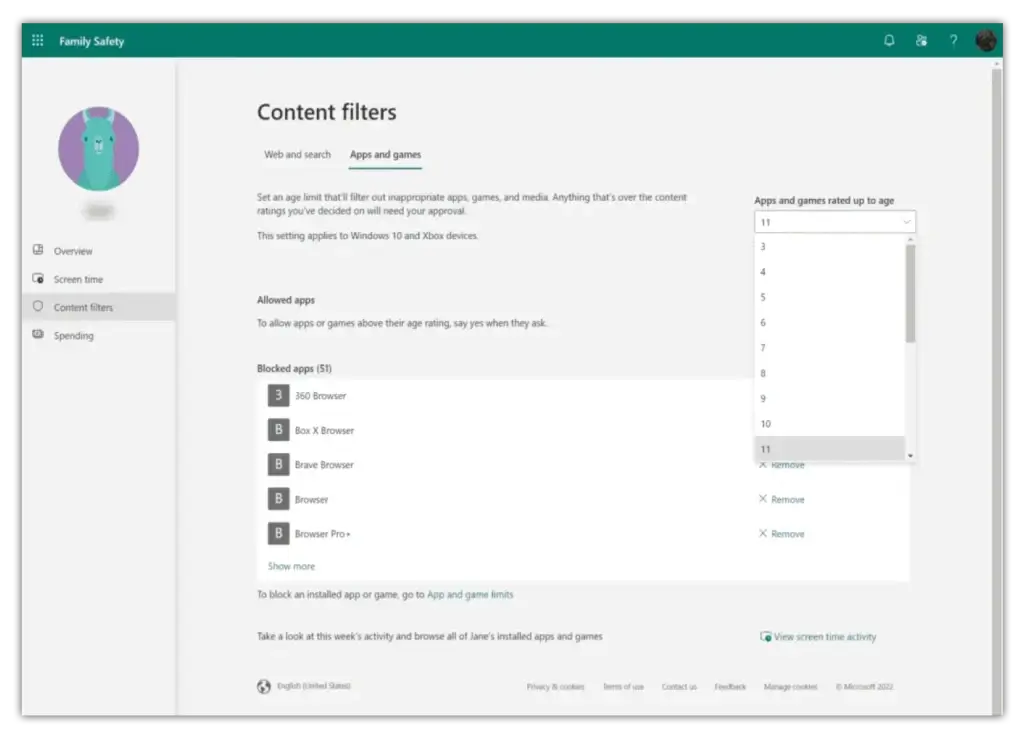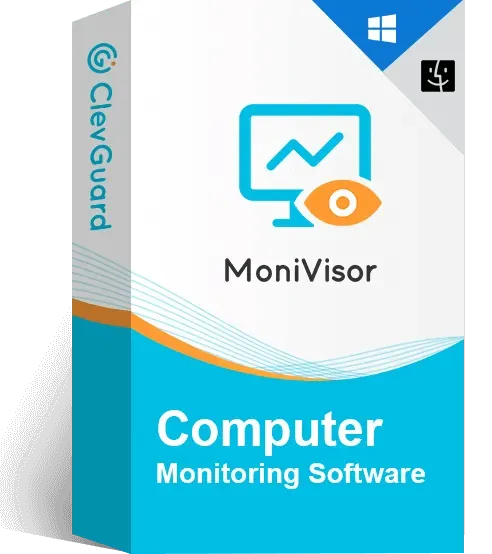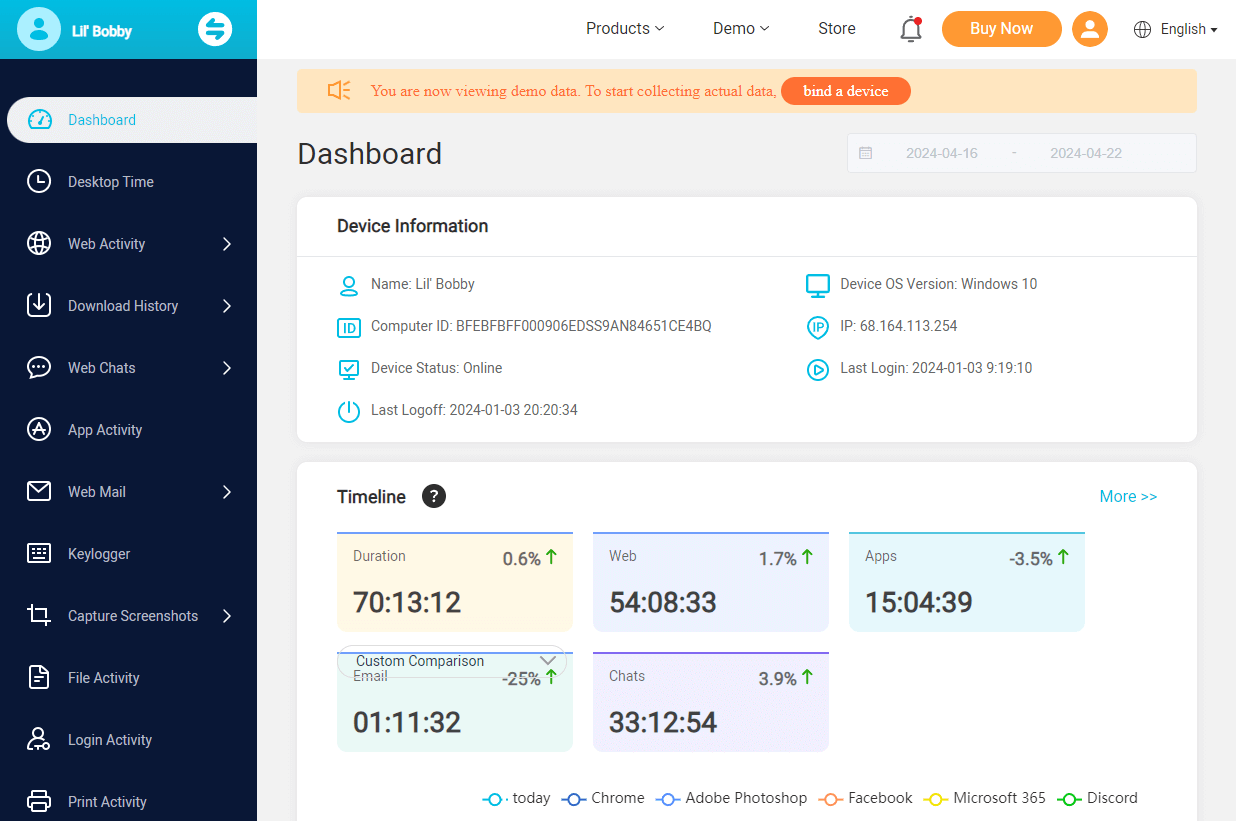ClevGuard Support: Monitor Devices with Others' Permission.
In today's digital age, it's more important than ever to keep our children safe online. As a parent, you may worry about what your child is exposed to on the internet. If you're looking to monitor your child's online activity and put controls in place to protect them, Windows parental controls can provide a solution for laptops. And this post sheds light on how to set up parental controls on Windows 11.
Table of Contents
What Are Parental Controls on Windows Computers?
Parental controls are software settings or features that allow parents to restrict their children's access to certain content or activities on a computer. These controls are designed to protect children from inappropriate material and help manage their online time. Common features of parental controls include:
Content filtering: Blocking websites and content based on age-appropriate ratings or specific keywords.
Time limits: Setting restrictions on how long a child can use the computer or specific applications.
Game ratings: Limiting access to games based on their content rating.
App and software restrictions: Controlling which programs can be used.
Monitoring: Tracking a child's online activity, such as websites visited and search history.

By using parental controls, parents can create a safer online environment for their children and encourage responsible computer use.
But how do you set up these controls? And what if you have different versions of Windows? In this article, we'll guide you through the process of setting up parental controls on various Windows versions, as well as introduce an excellent parental monitoring software program called MoniVisor.
Does Windows 11 have built-in parental controls?
Yes, Windows has built-in parental controls. Windows 10 and 11 both offer robust parental control features through the Microsoft Family Safety app. This allows you to:
- Manage screen time: Set limits on how long your child can use their device.
- Filter content: Control access to age-appropriate content online.
- Monitor activity: View your child's app and website activity.
- Laptop location tracking: See your child's location (with their permission).
To access these features, you'll need to create a Microsoft account for your child and add them to your family group. Here comes another question: can a child under 13 have a Microsoft account?
Yes, a child under 13 can have a Microsoft account, but with: parental consent: a parent or legal guardian must provide consent for the account; limited features: the account will have restrictions on certain features and services; data privacy: Microsoft has stricter data handling practices for child accounts to comply with privacy laws.
How to Put Parental Settings on Windows 11 Computers
Regardless of your operating systems, setting up parental controls on Windows computers is just a two-step process: first, you need to add a child account to your family group, and then you can adjust the parental control settings for that account. Below, we will guide you on how to put parental controls on different versions of Windows.
Windows 7
To set up parental settings on a Windows 7 computer, you can use the built-in Parental Controls feature. Here's how to do it:
- Click on the “Start” button and then go to the “Control Panel”. In the “User Accounts” and “Family Safety” section, click on “Set up parental controls” for any user.
- Choose the user account for which you want to set up parental controls.
- If parental controls are currently turned off, click “On, enforce current settings” under “Parental Controls”.

-
You can now adjust the settings according to your need: You can now customize the settings based on your preferences. Options typically include: time limits: Set specific time limits for computer use; games: choose which games the user can play based on their content rating. allow or block specific programs: decide which programs can be accessed; web filtering: control the websites that can be visited.
-
After configuring the parental control settings, click on “OK” or “Save” to apply the changes.
Windows 11, 10, and 8
When it comes to the Windows 11, the native Family Safety arrives at the scene. This feature is available on Windows 8, 10, and 11, while there are slight differences among these OS. To set up parental controls on a Windows 11 laptop, follow these steps:
1. Open Family Safety settings:
For Windows 8: Swipe in from the right edge of the screen (or move your mouse pointer to the lower-right corner) to access the Charms menu. Click on “Settings,” then select “Change PC settings” at the bottom. In the PC settings menu, select “Accounts” and then “Family & other users.”

For Windows 10 and 11: Click on the Start menu and select "Settings" (gear icon). In the Settings window, click on "Accounts." Select "Family & other users" from the left sidebar.
2. Add a child account:
Under “Your family,” click on “Add a child” and follow the prompts to create a new child account. If the child already has a Microsoft account, you can use that to add them.
3. Set up parental controls:
After adding the child account, click on the account name to access its settings. Toggle the “Use Family Safety to monitor your child's computer activity” option to “On.” Click on “Manage settings on Family Safety website” to configure detailed settings online.
4. Customize restrictions:
On the Family Safety website, you can set up various restrictions and monitoring options, including time limits, app and game restrictions, web filtering, and activity reporting. Adjust the settings according to your preferences, setting appropriate limits and restrictions for the child's account.
5. Save Changes:
Once you've configured the parental control settings online, they will be applied to the child's account on the Windows 8 computer automatically.
While Windows 8 and Windows 11 share some similarities in their parental control features, there are also notable differences due to the evolution of the operating system. Here are some key distinctions between parental controls on Windows 8 and Windows 11:

- Integration and user interface: Windows 11 has a modern interface compared to Windows 8, making it easier to navigate parental control settings.
- Activity reporting: Windows 11 provides detailed reports on a child's activity, including websites visited and screen time, directly from Family Safety settings.
- Check screen time: Windows 11 offers more advanced screen time management, allowing parents to set specific limits and schedule usage times.
- App and game restrictions: Windows 11 allows parents to control access to apps and games based on age ratings, offering more flexibility.
- Web browsing controls: Windows 11 has enhanced web filtering to block inappropriate sites and set browsing restrictions.
- Integration with Microsoft Account: Like Windows 10, parental controls in Windows 11 are integrated with Microsoft accounts, making it easier to manage settings across devices.
MoniVisor: Parental Control Software on Windows 11
Windows 11 provides a foundation for parental control with its Microsoft Family Safety suite. While these built-in tools offer essential features like screen time management and content filtering, they may not meet the comprehensive monitoring needs of many parents.
To address this, dedicated third-party solutions like MoniVisor emerge as valuable alternatives. These specialized computer software applications are designed to provide in-depth visibility into a child's online activities.

MoniVisor -- Best Parental Control Software for Windows 11
- Browser history: Enable users to monitor and review the websites visited by individuals using the device.
- Software usage tracking: Track the usage of installed software applications on the device.
- Keystroke logging: Record keystrokes made on the keyboard, allowing users to monitor text input in real-time or review keystroke logs retrospectively.
- IM messaging app tracking: Track conversations and interactions within instant messaging (IM) applications, such as WhatsApp, Facebook Messenger, or Instagram.
- Real-time screen monitoring: Provide live visibility into what is being displayed on the screen of the monitored device.
When you have a glimpse of what MoniVisor can offer, it’s time to learn how to put parental settings on Windows 11 with its help:
Step 1: Sign up for a new account and choose an appropriate pricing plan;
Step 2: Go check the inbox and see if there’s a confirmation email. Follow the instructions provided in the email to download and install MoniVisor on the target Windows computer;

Step 3: When installed successfully, sign in to the online control panel with the registered email address and start monitoring. Click on the left column to change the views.

To sum up, MoniVisor is an all-in-one parental control program on Windows. No matter you are using Windows 7, 8, 10, or 11, the compatibility of this tool saves your from troubles. Don’t worry if this software is up to your standard, hit the free demo below to give it a try on your Windows laptop.
Wrapping Up
Setting up parental controls on your Windows PC can help create a safer online environment for your children. However, remember that no tool is 100% foolproof. It's essential to educate your children about online safety and encourage them to share their online experiences with you.
Furthermore, consider using additional monitoring tools like MoniVisor for comprehensive protection. By combining these methods, you can achieve a robust setup for parental control on your computer, ensuring a safer and more controlled digital environment for your child to explore and learn.







